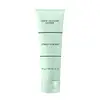What's inside
What's inside
 Key Ingredients
Key Ingredients

 Benefits
Benefits

 Concerns
Concerns

 Ingredients Side-by-side
Ingredients Side-by-side

Water
Skin ConditioningCoco-Caprylate
EmollientAloe Barbadensis Leaf Juice
Skin ConditioningCaprylic/Capric Triglyceride
MaskingPolyglyceryl-3 Dicitrate/Stearate
EmulsifyingCentaurea Cyanus Flower Water
Skin ConditioningGlycerin
HumectantButyrospermum Parkii Butter
Skin ConditioningGlyceryl Stearate Citrate
EmollientHelianthus Annuus Seed Oil
EmollientPrunus Amygdalus Dulcis Oil
Skin ConditioningBeeswax
Emulsion StabilisingTocopherol
AntioxidantNuphar Luteum Root Extract
Skin ConditioningSodium Benzoate
MaskingLevulinic Acid
PerfumingSodium Levulinate
Skin ConditioningXanthan Gum
EmulsifyingParfum
MaskingWater, Coco-Caprylate, Aloe Barbadensis Leaf Juice, Caprylic/Capric Triglyceride, Polyglyceryl-3 Dicitrate/Stearate, Centaurea Cyanus Flower Water, Glycerin, Butyrospermum Parkii Butter, Glyceryl Stearate Citrate, Helianthus Annuus Seed Oil, Prunus Amygdalus Dulcis Oil, Beeswax, Tocopherol, Nuphar Luteum Root Extract, Sodium Benzoate, Levulinic Acid, Sodium Levulinate, Xanthan Gum, Parfum
Water
Skin ConditioningCetyl Ethylhexanoate
EmollientIsopropyl Isostearate
EmollientIsostearyl Neopentanoate
EmollientCaprylic/Capric/Myristic/Stearic Triglyceride
EmollientPolysorbate 60
EmulsifyingGlyceryl Stearate
EmollientPEG-100 Stearate
Glycerin
Humectant1,2-Hexanediol
Skin ConditioningCetearyl Alcohol
EmollientAdenosine Triphosphate
Skin ConditioningAcetyl Tyrosine
Skin ConditioningProline
Skin ConditioningBisabolol
MaskingHydrolyzed Vegetable Protein
Skin ConditioningCucumis Sativus Fruit Extract
EmollientAloe Barbadensis Leaf Juice
Skin ConditioningChamomilla Recutita Flower Extract
MaskingGlucose
HumectantAllantoin
Skin Conditioning4-T-Butylcyclohexanol
MaskingHydroxyacetophenone
AntioxidantPentylene Glycol
Skin ConditioningEthoxydiglycol
HumectantButylene Glycol
HumectantAminomethyl Propanol
BufferingLactic Acid
BufferingAcrylates/C10-30 Alkyl Acrylate Crosspolymer
Emulsion StabilisingPropylene Glycol
HumectantXanthan Gum
EmulsifyingDisodium EDTA
Water, Cetyl Ethylhexanoate, Isopropyl Isostearate, Isostearyl Neopentanoate, Caprylic/Capric/Myristic/Stearic Triglyceride, Polysorbate 60, Glyceryl Stearate, PEG-100 Stearate, Glycerin, 1,2-Hexanediol, Cetearyl Alcohol, Adenosine Triphosphate, Acetyl Tyrosine, Proline, Bisabolol, Hydrolyzed Vegetable Protein, Cucumis Sativus Fruit Extract, Aloe Barbadensis Leaf Juice, Chamomilla Recutita Flower Extract, Glucose, Allantoin, 4-T-Butylcyclohexanol, Hydroxyacetophenone, Pentylene Glycol, Ethoxydiglycol, Butylene Glycol, Aminomethyl Propanol, Lactic Acid, Acrylates/C10-30 Alkyl Acrylate Crosspolymer, Propylene Glycol, Xanthan Gum, Disodium EDTA
 Reviews
Reviews

Ingredients Explained
These ingredients are found in both products.
Ingredients higher up in an ingredient list are typically present in a larger amount.
Aloe Barbadensis Leaf Juice comes from leaves of the aloe plant. Aloe Barbadensis Leaf Juice is best known for helping to soothe sunburns. It is also anti-inflammatory, moisturizing, antiseptic, and can help heal wounds.
Aloe is packed with good stuff including Vitamins A, C, and E. These vitamins are antioxidants, which help fight free-radicals and the damage they may cause. Free-radicals are molecules that may damage your skin cells, such as pollution.
Aloe Barbadensis Leaf Juice also contains sugars. These sugars come in the form of monosaccharides and polysaccharides, folic acid, and choline. These sugars are able to help bind moisture to skin.
It also contains minerals such as calcium, 12 anthraquinones, fatty acids, amino acids, and Vitamin B12.
Learn more about Aloe Barbadensis Leaf JuiceGlycerin is already naturally found in your skin. It helps moisturize and protect your skin.
A study from 2016 found glycerin to be more effective as a humectant than AHAs and hyaluronic acid.
As a humectant, it helps the skin stay hydrated by pulling moisture to your skin. The low molecular weight of glycerin allows it to pull moisture into the deeper layers of your skin.
Hydrated skin improves your skin barrier; Your skin barrier helps protect against irritants and bacteria.
Glycerin has also been found to have antimicrobial and antiviral properties. Due to these properties, glycerin is often used in wound and burn treatments.
In cosmetics, glycerin is usually derived from plants such as soybean or palm. However, it can also be sourced from animals, such as tallow or animal fat.
This ingredient is organic, colorless, odorless, and non-toxic.
Glycerin is the name for this ingredient in American English. British English uses Glycerol/Glycerine.
Learn more about GlycerinWater. It's the most common cosmetic ingredient of all. You'll usually see it at the top of ingredient lists, meaning that it makes up the largest part of the product.
So why is it so popular? Water most often acts as a solvent - this means that it helps dissolve other ingredients into the formulation.
You'll also recognize water as that liquid we all need to stay alive. If you see this, drink a glass of water. Stay hydrated!
Learn more about WaterXanthan gum is used as a stabilizer and thickener within cosmetic products. It helps give products a sticky, thick feeling - preventing them from being too runny.
On the technical side of things, xanthan gum is a polysaccharide - a combination consisting of multiple sugar molecules bonded together.
Xanthan gum is a pretty common and great ingredient. It is a natural, non-toxic, non-irritating ingredient that is also commonly used in food products.
Learn more about Xanthan Gum